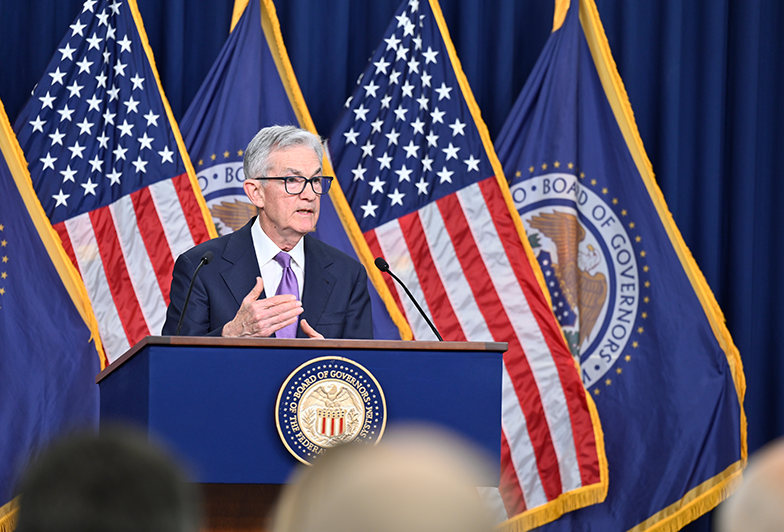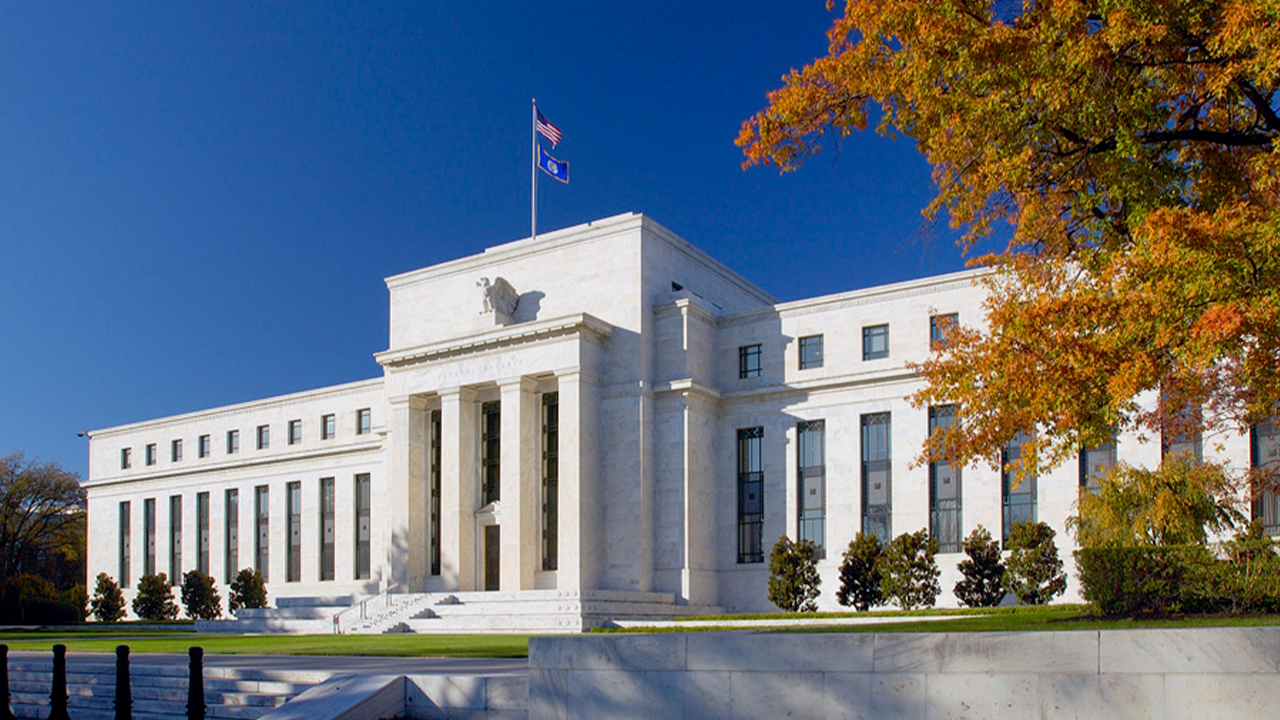Expectations of Interest Rate Cuts Tempered for 2024
Positive sentiment among investors and analysts regarding substantial interest rate cuts in 2024 has been tempered by recent remarks from the Federal Reserve. Consequently, there is a growing sense of caution among investors and analysts in their reactions to the latest interest rate developments.
Let's delve into the current landscape of interest rates.
What is the Current Federal Interest Rate?
An argument can be made that the Federal Reserve's response to the escalating inflation in 2021 and 2022 was delayed, as evidenced by the minimal impact of interest rate hikes on curbing the rapid surge in consumer prices. Despite efforts to tighten monetary policy, many individuals found themselves grappling with the burden of escalating costs for essentials such as food, housing, and transportation.
While inflation has exhibited a gradual decline, analysts are increasingly critical of the Federal Reserve's perceived sluggishness in implementing interest rate cuts. Concerns loom over the potential consequences of this cautious approach, with fears mounting that it may precipitate a significant economic downturn.
Over the span of 18 months, from March 2022 to July 2023, the interest rate surged from nearly zero to a range of 5.25% to 5.5%, marking the highest level in 22 years. While this move was successful in addressing inflationary pressures, it has prompted speculation among analysts regarding the timing of future rate adjustments.
Are Investors Still Expecting Interest Rate Cuts in 2024?
The looming question for analysts is whether interest rates will decrease in 2024. A potential drop in the benchmark rate would subsequently lower borrowing costs for credit cards, mortgages, and various consumer and business loans, almost guranteed to stimulate economic activity. The anticipation of reduced rates has notably propelled the stock market to unprecedented highs.
However, the wait for reduced rates might be longer than analysts were predicting at the end of last year. The Federal Reserve has indicated its willingness to reduce interest rates once it is assured of a trajectory toward a 2% inflation rate. Presently, the inflation rate stands at 3.1%.
Excerpts from the Fed’s January meeting reveal a nuanced debate, with some members expressing concerns about maintaining current rates potentially precipitating a recession, while others caution against hasty rate cuts leading to increased inflationary pressures. The Federal Reserve appears to be exercising caution, opting to await further indications of declining inflation before considering rate adjustments.
Entering the New Year, investors initially held optimistic expectations regarding the timing and pace of interest rate cuts. However, there has been a recalibration of these expectations, with markets now anticipating only three rate cuts later in the year, a reduction from the previous estimates of five to six cuts.
 Chair Jerome Powell reiterated on Wednesday his conviction that the Federal Reserve will reduce its key interest rate this year. However, he emphasized the need for further evidence indicating a sustainable decline in inflation back to the Fed's 2% target before any rate cuts are implemented. (Image courtesy Federal Reserve)
Chair Jerome Powell reiterated on Wednesday his conviction that the Federal Reserve will reduce its key interest rate this year. However, he emphasized the need for further evidence indicating a sustainable decline in inflation back to the Fed's 2% target before any rate cuts are implemented. (Image courtesy Federal Reserve)Is Inflation Going Down?
The Federal Reserve did indeed raise interest rates as a means to mitigate inflation, culminating in the last hike occurring in July 2023. Since then, there have been no further increases, prompting analysts to reconsider their overly optimistic forecasts of impending rate cuts.
An essential measure of inflation excludes volatile food and energy items, and according to the consumer price index, this measure witnessed a 0.4% increase in January, maintaining the annual increase at 3.9%.
In 2022, inflation peaked at 7.1%. By 2023, it had fallen to 2.6%. Notably, prices grew at an annual rate of 2% in the latter half of the previous year, aligning with the Fed’s target. However, it's crucial to recognize that consumer prices unexpectedly surged, particularly when excluding food and energy categories, marking the most significant increase in the past eight months.
Mortgage Rates Remain High
Recently, the real estate market has been clouded by low inventory, intense bidding competitions, historically high mortgage rates, and soaring prices. As we progress into the New Year, many are pondering the trajectory of mortgage rates in 2024.
It's anticipated that the mortgage rate market will exhibit volatility throughout the year. While Federal interest rate cuts are expected to reduce mortgage rates, the timing of these cuts will be contingent upon inflation rates and their rate of decline. It's plausible that rates may increase before experiencing a downturn, with the initial interest rate cut anticipated around the middle of the year.
When 2024 draws to a close, mortgage rates are projected to settle around 6.5%.
Despite the fluctuations and uncertainties surrounding mortgage interest rates, both seasoned and new investors can confidently explore real estate opportunities through short notes. Connect Invest facilitates the opportunity to generate passive income with a minimum investment amount at $500. By investing in collateral-backed loans offering higher interest rates compared to traditional banking options, investors stand to earn up to 9% APY along with the return of their principal investment upon maturity of the short notes.
What are Mortgage Rates Impacted By?
Astute real estate investors, buyers, and sellers remain vigilant about monitoring mortgage rates and staying informed on interest rate news. However, it's essential to acknowledge the inherent uncertainty in attempting to predict future market trends accurately. The mortgage market is inherently complex and subject to considerable volatility due to a multitude of factors.
Mortgage rates are influenced by a variety of variables, including Federal Reserve monetary policy, inflation rates, fluctuations in the bond market, geopolitical events, and other economic indicators. As such, the market's trajectory can be challenging to forecast with absolute certainty, underscoring the importance of staying informed and adaptable in response to evolving conditions.
Credit Card Interest Rates at an All-Time High
It has always been financially prudent to avoid carrying credit card debt, as credit cards can quickly lead to overwhelming financial burdens. For those who use credit cards, paying off the balance in full each month is the optimal approach.
Credit card usage comes with significant costs, particularly in the form of interest charges. In recent years, these costs have become even more pronounced. In 2022 alone, credit card companies charged cardholders over $105 billion in interest fees. The gap between the average annual percentage rate (APR) and the prime rate has reached historic highs, a trend often overshadowed by other financial news.
According to data from the Consumer Financial Protection Bureau, the average annual percentage rate for credit cards was 12.9% in 2013. By 2023, this figure had surged to 22.8%.
Given that credit card interest rates are tied to the prime rate, which, in turn, is influenced by the Federal Reserve's actions, it is likely that these high rates will persist for the foreseeable future. As the Federal Reserve raises its benchmark rate, the prime rate follows suit, resulting in higher credit card rates for consumers.
Parting Thoughts
It is natural to experience concern or even apprehension when contemplating whether interest rates will decrease in 2024. As we confront the uncertainties of the new year, it becomes evident that predictions must be tempered by the realities of the economic landscape. However, it is essential to recognize that knowledge empowers us to navigate these challenges effectively.
One encouraging aspect is that the federal interest target rate, which currently stands at 5.25% to 5.5%, remained unchanged during the January meeting of the Federal Reserve. This stability suggests a level of continuity in monetary policy, providing a degree of assurance to investors and market participants.
Furthermore, indications suggest that the Federal Reserve is unlikely to raise the target rate further in this economic cycle. On the contrary, there is a growing expectation that the central bank may opt to lower the rate later in 2024. This potential shift in policy could have positive implications for various sectors of the economy.
For individuals seeking avenues to generate passive income through real estate investment while mitigating risks, exploring Connect Invest's innovative model presents an opportunity worth considering. By leveraging their expertise and resources, investors can access a platform designed to deliver sustainable returns in a dynamic market environment.

